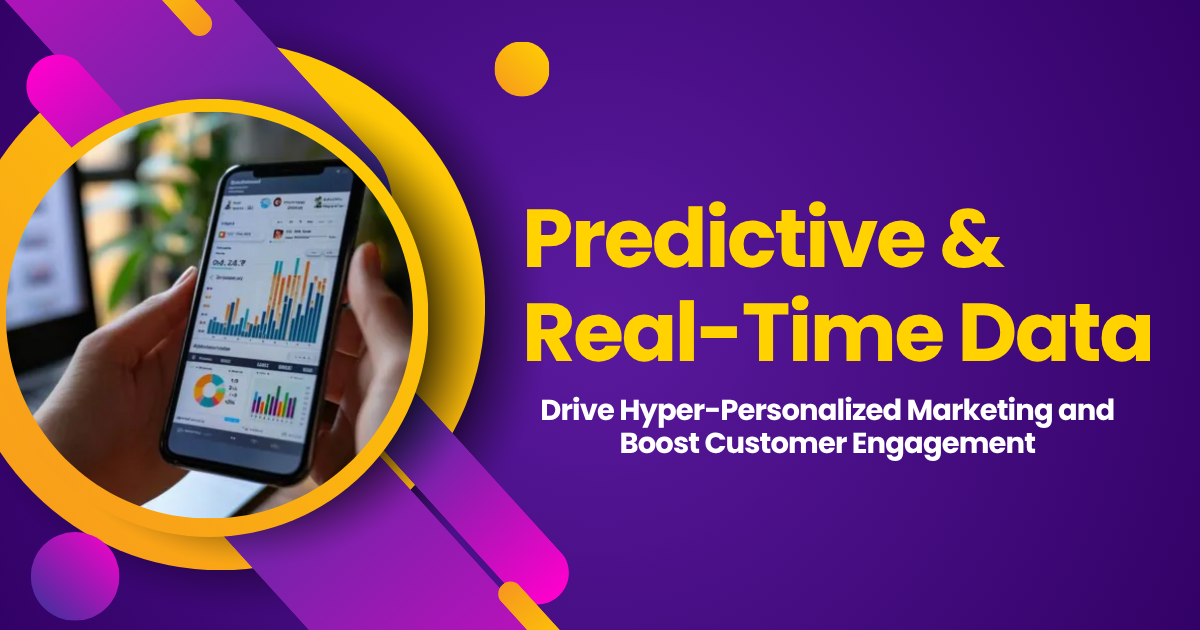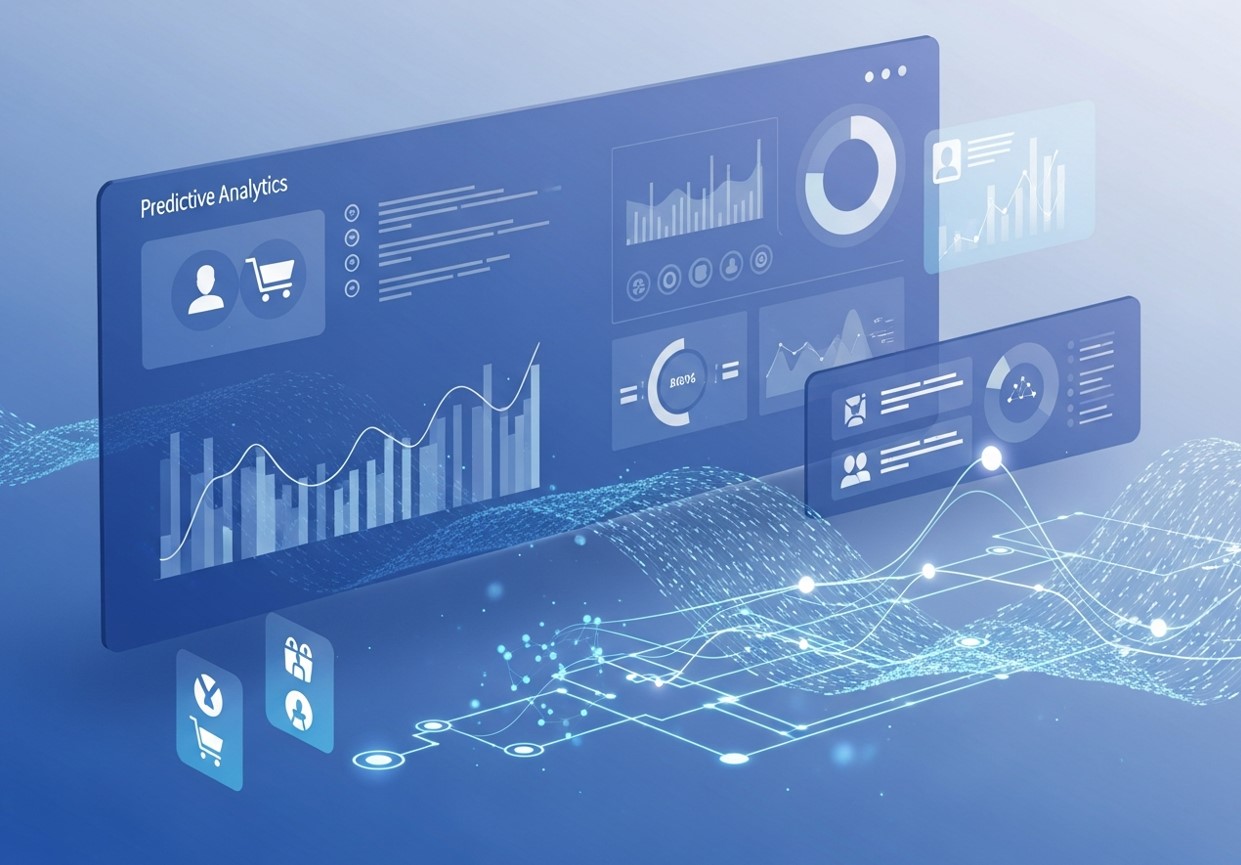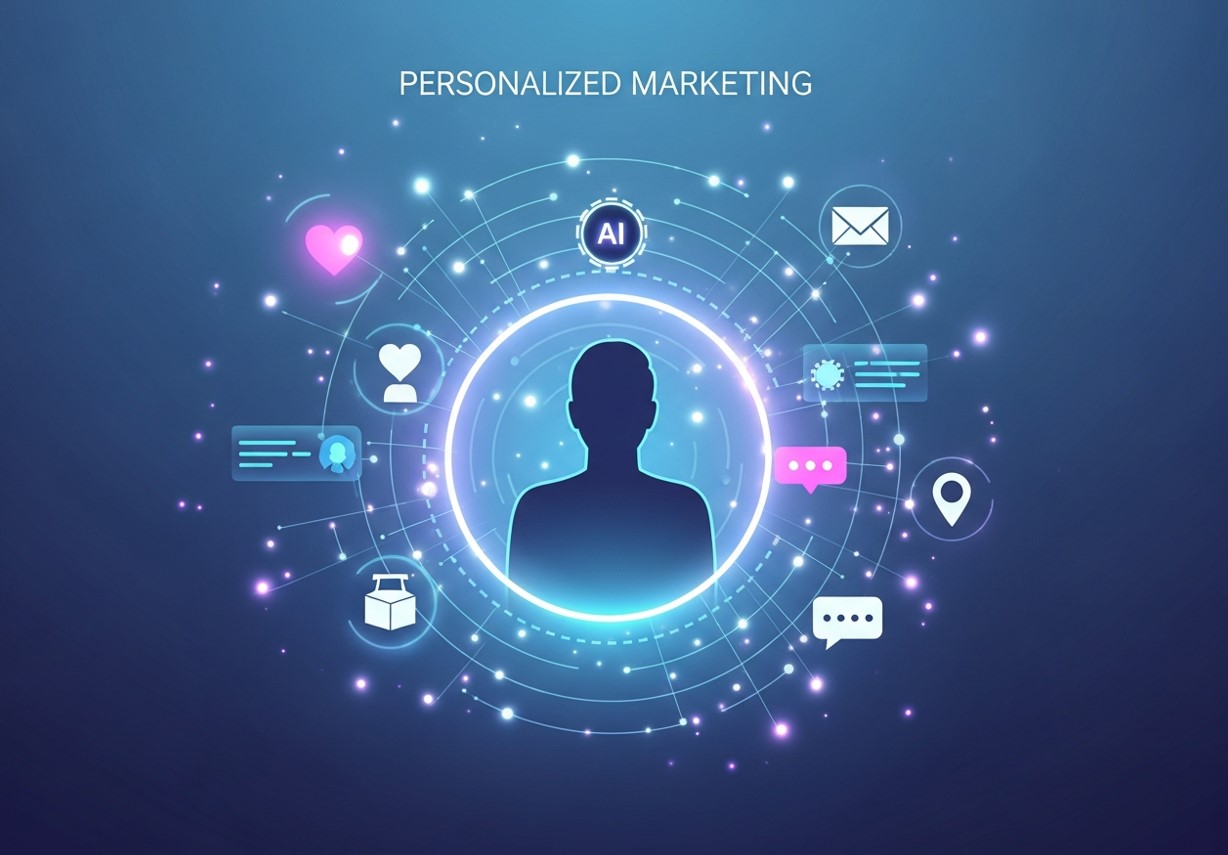
Predictive data forecasts customer behavior using AI, while real-time data tracks current actions. Together, they enable timely, personalized marketing that boosts engagement, retention, and revenue.
Personalized marketing is no longer a “nice-to-have” feature; it’s a core expectation for modern consumers. Generic, one-size-fits-all campaigns are quickly being ignored in favor of experiences that feel unique and relevant to the individual. To deliver this level of personalization at scale, marketers are turning to two powerful types of information: predictive and real-time data.
By harnessing the power of what a customer might do next (predictive data) and what they are doing right now (real-time data), businesses can create dynamic, highly relevant marketing campaigns. This approach not only enhances the customer experience but also significantly boosts engagement, conversion rates, and long-term loyalty. This guide explores how predictive and real-time data are revolutionizing personalized marketing, offering actionable strategies to implement them effectively.
Understanding Predictive Data

Predictive data is all about using historical information and machine learning to determine future outcomes. This aligns closely with the principles found in predictive analytics inside data-driven marketing. In marketing, this means forecasting customer behavior, such as who is likely to make a purchase, who might churn, or what products a specific segment will be interested in next.
By analyzing past purchasing habits, browsing history, and demographic information, predictive models can assign scores to individual customers, ranking their propensity to take a certain action. This allows marketers to be proactive rather than reactive, anticipating customer needs before they even arise.
How Predictive Data Fuels Personalization
Integrating predictive analytics into your marketing strategy can transform how you connect with your audience.
- Predictive Lead Scoring: Instead of treating all leads equally, predictive models can score them based on their likelihood to convert. This enables sales and marketing teams to prioritize their efforts on high-potential leads, tailoring their communication to address specific pain points and increase the chance of conversion. For example, a lead who has downloaded multiple whitepapers on a specific topic might receive a targeted email about a related webinar.
- Customer Churn Prediction: Acquiring a new customer is far more expensive than retaining an existing one. Predictive models can identify customers who are at high risk of churning by analyzing factors like decreased engagement, recent support tickets, or reduced purchase frequency. With this foresight, marketers can launch targeted retention campaigns, offering special discounts, personalized content, or proactive customer support to win them back before they leave.
- Personalized Product Recommendations:Predictive algorithms power the recommendation engines we see on major platforms. Brands looking to improve their recommendation systems often rely on a solid understanding of digital marketing analytics to optimize performance.
- Optimizing Customer Lifetime Value (CLV): By predicting the future value of a customer, businesses can segment their audience and invest resources more effectively. High-value customers might be enrolled in exclusive loyalty programs or receive premium offers, while mid-tier customers could be nurtured with campaigns designed to increase their purchase frequency or average order value.
Understanding Real-Time Data

While predictive data helps you plan for the future, real-time data is about capitalizing on the present moment. It refers to information that is collected and processed instantaneously, allowing for immediate action. This could be anything from a customer’s current location, the items they just added to their shopping cart, or the article they are reading on your blog right now.
The power of real-time data lies in its immediacy. It enables marketers to engage with customers in the context of their current actions, making interactions incredibly relevant and timely. This “in-the-moment” marketing can create a powerful sense of personal connection and urgency.
Real-time data allows brands to react instantly during the customer journey. This method helps marketers enhance campaigns with agility—something also explored in real-time and automation-focused marketing strategies.
How Real-Time Data Fuels Personalization
Leveraging real-time information allows for a level of agility and responsiveness that can significantly impact customer engagement.
- Behavior-Triggered Communications: This is one of the most common and effective uses of real-time data. When a customer takes a specific action, an automated response can be triggered. For instance, if a user abandons their shopping cart, a real-time system can send an email or push notification within minutes, reminding them of the items they left behind, perhaps with a limited-time discount to encourage completion.
- Dynamic Website Personalization: Your website doesn’t have to be a static experience for every visitor. With real-time data, you can dynamically change the content a user sees based on their behavior. A first-time visitor might see a welcome offer, while a returning customer might be shown products related to their previous purchases. Content, banners, and calls-to-action can all be adapted in real time to match the user’s journey.
- Geotargeting and Location-Based Offers: For businesses with a physical presence, real-time location data is a goldmine. A retailer can send a push notification with a special offer to a customer who is physically near one of their stores. Similarly, a restaurant could promote its lunch specials to users within a certain radius during lunchtime. This hyper-local approach makes marketing messages feel incredibly timely and relevant.
- Real-Time Customer Support: When a customer is struggling on your website, for example, repeatedly clicking a broken link or spending a long time on a support page, a real-time system can trigger a proactive chat invitation from a support agent. This immediate assistance can resolve frustration, prevent a customer from leaving, and turn a potentially negative experience into a positive one.
The Ultimate Power Couple: Combining Predictive and Real-Time Data
While predictive and real-time data are powerful on their own, their true potential is unlocked when they are used together. This integrated approach allows marketers to build a comprehensive, 360-degree view of the customer, enabling a level of personalization that is both proactive and reactive.
Imagine a scenario where predictive analytics identifies a customer as having a high lifetime value but also a high risk of churning. When this customer visits your website (real-time data), you can immediately present them with a personalized offer designed to reinforce their loyalty, such as an exclusive discount or early access to a new product.
Here’s another example:
- Predictive Insight: Your predictive model identifies a customer segment that is likely to be interested in sustainable products based on their past purchases of eco-friendly items.
- Real-Time Trigger: A customer from this segment visits your website and begins browsing a new line of organic cotton clothing.
- Combined Action: The system triggers a real-time pop-up that highlights the sustainable features of the products they are viewing and offers them a 10% discount on their first purchase from the new collection. An email follow-up could be scheduled with more content about your brand’s commitment to sustainability.
By combining the “who” and “what” from predictive data with the “where” and “when” from real-time data, you create a seamless and deeply personal customer journey.
Building Your Data-Driven Strategy
Implementing a strategy that leverages both predictive and real-time data requires careful planning and the right technology.
- Data Integration is Key: Your first step is to break down data silos. You need a centralized platform, like a Customer Data Platform (CDP), that can unify data from all touchpoints—your CRM, e-commerce platform, website analytics, and social media channels.
- Invest in the Right Tools: You’ll need analytics tools capable of running predictive models and a marketing automation platform that can execute campaigns based on real-time triggers. Many modern platforms now offer these capabilities in a single, integrated solution.
- Start Small and Scale: You don’t have to do everything at once. Begin with a single use case, such as an abandoned cart campaign or a churn prediction model. Measure the results, learn from them, and then gradually expand your efforts.
- Prioritize Privacy and Transparency: With great data comes great responsibility. Be transparent with your customers about how you are using their data and give them control over their information. Adhering to regulations like GDPR and CCPA is not just a legal requirement; it’s essential for building trust.
You can explore a deeper roadmap in how to build a data-driven marketing strategy
The Future of Marketing is Personal

The age of mass marketing is over. Today’s consumers expect brands to understand them as individuals and provide experiences that are tailored to their unique needs and preferences. Predictive and real-time data are the essential ingredients for meeting this expectation.
By moving beyond reactive campaigns and embracing a data-driven approach, you can create marketing that is not only more effective but also more valuable to your customers. It’s about delivering the right message, to the right person, at the right time. For businesses ready to embrace this new reality, the rewards—in the form of deeper engagement, stronger loyalty, and sustainable growth—are immense.
Frequently Asked Questions (FAQ)
What is the main difference between predictive and real-time data?
The main difference is timing and purpose. Predictive data uses historical information to forecast future events, helping you plan proactive marketing strategies. Real-time data captures what is happening right now, allowing you to react instantly and engage customers in the moment.
Do I need to be a data scientist to use predictive analytics?
Not anymore. While data scientists are crucial for building complex custom models, many modern marketing platforms have built-in, user-friendly predictive analytics features. These tools allow marketers to leverage lead scoring, churn prediction, and product recommendations without needing to write code.
Can small businesses use predictive and real-time data?
Absolutely. The technology that powers data-driven marketing is becoming more accessible and affordable. Many e-commerce platforms and email marketing services now offer features like abandoned cart automation and basic segmentation. Small businesses can start with these tools and scale their efforts as they grow.
How do I ensure data privacy when using personalization?
Data privacy is paramount. Always be transparent with users by having a clear privacy policy that explains what data you collect and how you use it. Obtain explicit consent before collecting personal information, and provide easy-to-use options for users to manage their data and communication preferences.
What is the difference between predictive data and real-time data?
Predictive data forecasts future customer behavior using historical information and algorithms, while real-time data captures what customers are doing right now, enabling immediate actions.
Why is personalized marketing so important today?
Consumers expect tailored experiences. Personalized marketing improves engagement, boosts conversions, and increases customer loyalty by delivering relevant content at the right moment.
Can small businesses use predictive and real-time data?
Yes. Many affordable tools like Shopify, Klaviyo, Mailchimp, and HubSpot now offer built-in predictive scoring, automated triggers, and segmentation features suitable for small teams.
Do predictive analytics require advanced technical skills?
Not necessarily. Modern marketing platforms provide user-friendly predictive features—such as churn prediction, product recommendations, and lead scoring—without needing to code.
How does real-time data improve customer experience?
Real-time insights allow brands to respond instantly with behavior-triggered messages, dynamic website content, location-based offers, and proactive customer support.
What types of data are needed for predictive analytics?
Common data sources include purchase history, browsing patterns, demographics, email engagement, and customer service interactions. More data improves accuracy, but quality matters most.
Is hyper-personalization safe for customer privacy?
Yes—when done responsibly. Brands must be transparent, obtain consent, protect data, and follow privacy laws like GDPR and CCPA.
How do predictive and real-time data work together?
Predictive data identifies who is likely to convert or churn, while real-time data shows what they’re doing right now. Together, they enable perfectly timed, highly relevant messages.
What is an example of a real-time triggered campaign?
Abandoned cart emails, limited-time push notifications, chatbot messages during website activity, and personalized pop-ups are all real-time actions.
What tools help implement predictive + real-time marketing?
Platforms like HubSpot, Klaviyo, Salesforce, Adobe Experience Cloud, Segment CDP, Mixpanel, and Braze combine predictive analytics with live customer behavior triggers.
Leave a Reply